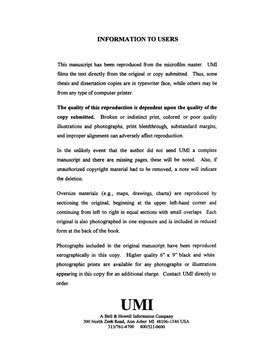| dc.contributor.advisor | Tiab, Djebbar, | en_US |
| dc.contributor.author | Jongkittinarukorn, Kittiphong. | en_US |
| dc.date.accessioned | 2013-08-16T12:30:05Z | |
| dc.date.available | 2013-08-16T12:30:05Z | |
| dc.date.issued | 1998 | en_US |
| dc.identifier.uri | https://hdl.handle.net/11244/5657 | |
| dc.description.abstract | The developed algorithm is applied to generate the dimensionless pressure and the dimensionless pressure derivative for a horizontal well in eight different systems whose analytical solutions are not available. These cases include (1) a horizontal well in a two-layer reservoir, (2) a horizontal well in a two-layer reservoir with gas-cap drive, (3) a horizontal well in a two-layer reservoir with bottom-water drive, (4) a horizontal well in a two-layer reservoir with gas-cap and bottom-water drives, (5) a horizontal well intersecting a two-layer reservoir, (6) a snake-shape horizontal well in a two-layer reservoir, (7) a horizontal well intersecting a three-layer reservoir, and (8) a vertical well intersecting a two-layer reservoir without cross flow. Their transient behaviors are studied in this work. | en_US |
| dc.description.abstract | This dissertation presents a boundary element method for solving pressure transient behavior of multi-layer reservoirs. Two types of boundary conditions, Dirichlet and Neumann, can be handled by the proposed technique. The boundary element method yields several advantages over the conventional finite-different and finite-element methods; including the reduction of the dimension of the problem by one, yielding more accurate results by using the analytical solutions of the governing equations as the weighting functions, no gird orientation and numerical dispersion effects, and flexibility of handling complex geometries and boundary conditions. | en_US |
| dc.description.abstract | The step-by-step procedures for calculating reservoir parameters are developed in this work. The direct synthesis is applied to interpret pressure transient behavior of a horizontal well in complicated systems without type-curve matching. The conventional log-log, semi-log, and the Cartesian plots are used in this work. The procedure is illustrated by numerical examples. | en_US |
| dc.description.abstract | The developed algorithm is successfully applied to some simple cases with known analytical solutions including a finite linear aquifer, a horizontal well in closed reservoir, and a horizontal well in a multi-layer reservoir. | en_US |
| dc.description.abstract | Pressure transient analysis for horizontal wells has gained a lot of attention recently due to the increasing number of horizontal wells. Interpretation of horizontal well test data is much more difficult than for a vertical well. Due to heterogeneity, application of single-layer models fails to interpret the reservoir properties. Numerical methods are essential for a horizontal well in multi-layer reservoir with complicated wellbore configuration and boundary conditions. | en_US |
| dc.format.extent | xxviii, 399 leaves : | en_US |
| dc.subject | Engineering, Petroleum. | en_US |
| dc.subject | Boundary element methods. | en_US |
| dc.subject | Horizontal oil well drilling. | en_US |
| dc.subject | Engineering, Environmental. | en_US |
| dc.title | Interpretation of horizontal well performance in multi-layer reservoirs by the boundary element method. | en_US |
| dc.type | Thesis | en_US |
| dc.thesis.degree | Ph.D. | en_US |
| dc.thesis.degreeDiscipline | Mewbourne School of Petroleum and Geological Engineering | en_US |
| dc.note | Source: Dissertation Abstracts International, Volume: 59-07, Section: B, page: 3665. | en_US |
| dc.note | Adviser: Djebbar Tiab. | en_US |
| ou.identifier | (UMI)AAI9839791 | en_US |
| ou.group | Mewbourne College of Earth and Energy::Mewbourne School of Petroleum and Geological Engineering | |
